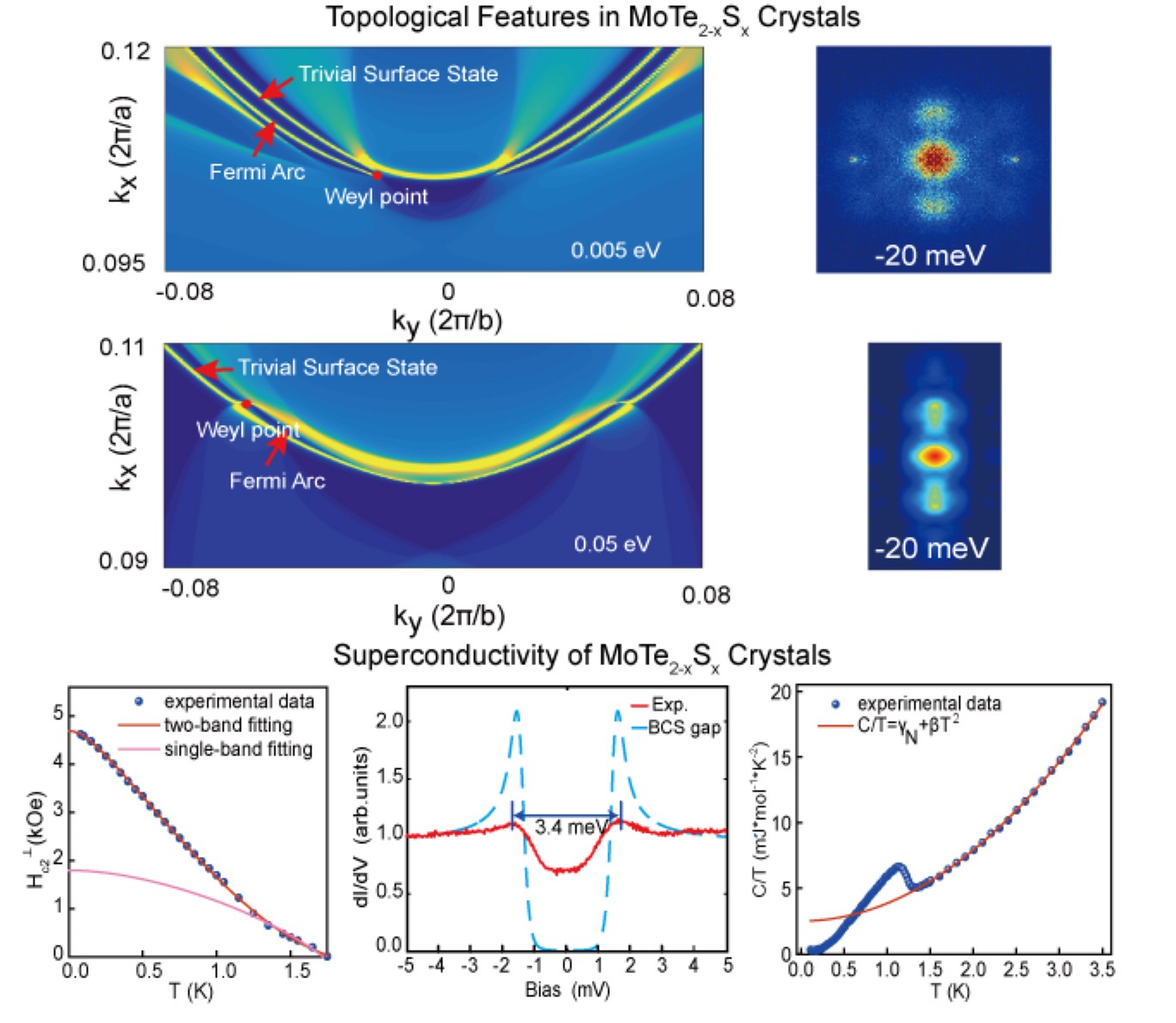
1. Observation of superconductivity induced by a point contact on 3D Dirac semimetal Cd3As2 crystals
The superconductivity induced by hard point contact on 3D Dirac semimetal Cd3As2 crystals is discovered. The point contact spectroscopy measurement reveals the characteristics of unconventional superconductivity. Furthermore, the zero bias conductance peak is observed, which might originate from Majorana fermions. This work indicates that the 3D Dirac semimetal could be modulated to potential topological superconductor in the contact region by hard point tip or probe. More importantly, the results reveal a new way to detect and study topological superconductivity by using hard tip/point contact on topological non-trivial materials, which is different with the prevailing proximity effect method for creating topological superconductivity or Majorana fermions.

2.Nontrivial superconductivity in topological MoTe2-xSx crystals
Bulk MoTe2-xSx (x~0.2) crystals grown by chemical vapor transport method are studied, and non-trivial superconducting signatures are observed. The quasiparticle interference patterns of Fermi arcs detected at the sample surface are consistent with the calculated non-trivial band structure of this material. A relatively large superconducting gap on the sample surface is founded, and the gap to critical temperature Tc ratio (Δ/kBTc) is 8.6. This value is much larger than that of the conventional weak-coupling superconductors, and also larger than the bulk superconducting gaps fitted from the specific heat measurement. This large superconducting gap might be from superconductivity parity mixing or unconventional pairing mechanism on the surface, potentially indicating the non-trivial superconductivity from Fermi arc surface states. Moreover, the transport and specific heat measurements show two-band superconductivity with potential s+- wave arising from a dominant interband coupling. Thus, the material could be the other s+- superconductor. This s+- paring superconductivity also makes the Weyl semimetal material MoTe2-xSx a promising topological superconductor candidate, the cornerstone for future topological quantum computation.

3.Anisotropic Fe2rmi Surface and Quantum Limit Transport in High Mobility Three-Dimensional Dirac Semimetal Cd3As3
The magnetotransport in Cd3As2 single crystal is studied to show the complete three dimensional Fermi surface. From the SdH analysis in different magnetic field direction, it is found when the magnetic field lies in [112] and [44-1] axis, only single oscillation period features present, however, the system shows double period oscillations when the field is applied along [1-10] direction. Moreover, combined with angular dependence of SdH oscillations at different magnetic field directions, they illustrate a complete 3D Fermi surfaces with two nested anisotropic ellipsoids around the Dirac points. Furthermore, by measuring the magnetoresistance up to 60 T, the quantum limit (n = 1 Landau level) at about 43 T is observed. In addition, ultrahigh mobility up to the scale of 10 million cm2/Vs is detected.
